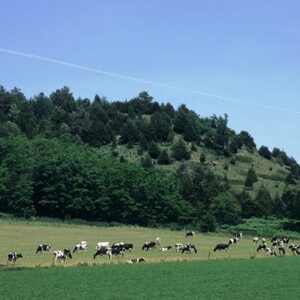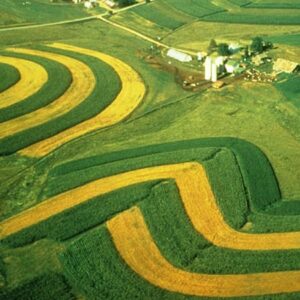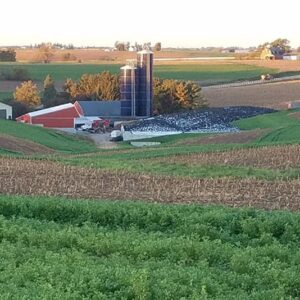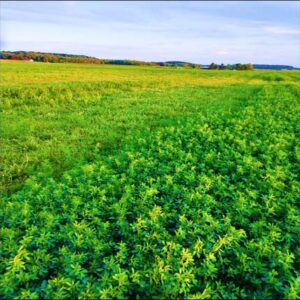The Agriculture Working Group will operate to produce and share adaptation strategies for Wisconsin’s diverse agricultural industries with Wisconsin scientists, policy makers, interest groups and citizens. These strategies will be generated collaboratively through applied research and outreach that addresses the changing needs of agricultural producers, supporting agricultural industries, and the public policy process. The Agriculture Working Group will actively engage and collaborate with researchers, specialists from government and nonprofit entities, and the agricultural industry itself.
Summary of Issues and Impacts
As of 2017, agriculture was responsible for 15 percent of Wisconsin’s greenhouse gas emissions. Wisconsin needs to adapt land-use and land management strategies that decrease agriculture’s greenhouse gas emissions, promote soil carbon sequestration, and increase agriculture’s resiliency to the climate change impacts we face.
Primary Impacts to Wisconsin Agriculture
Increased warming in the spring and fall can extend the growing season for summer crops like corn, beans, and alfalfa, but warming in summer could push temperatures outside the optimal range for some crops like potato. Increased temperatures can also accelerate the rate of phenological development of plants. Adapting new varieties that can take advantage of increased warmth is an important adaptive strategy.
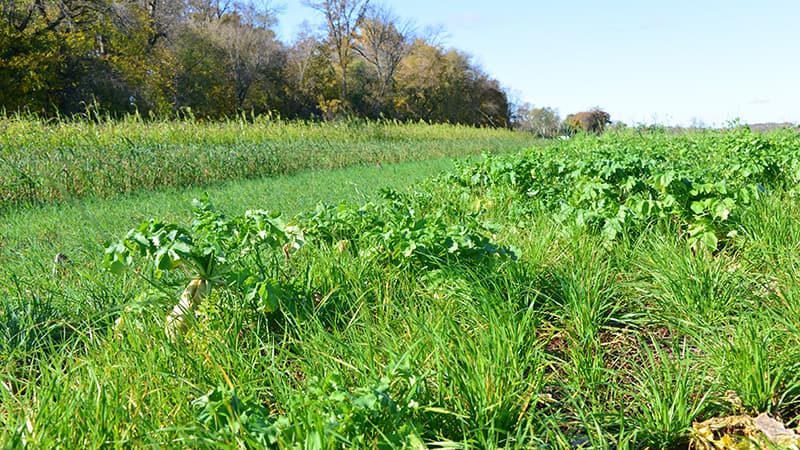
Increased temperatures during the winter can reduce the formation of ice and chilling units that cranberries need, more pests may overwinter, and new pests may appear as winters become less severe across Wisconsin.
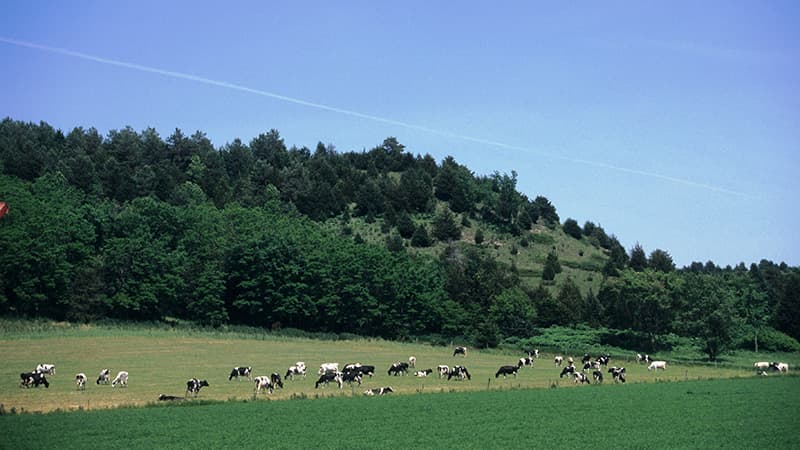
Increasing temperatures in the summer can lead to increased irrigation demands by crops, especially in the Central Sands Region that supports diverse potato and vegetable production. Farmers in other regions may begin to look towards irrigation as another adaptive strategy to deal with more heat and increased frequency of droughts during summers. More summer heat stress on livestock, in particular dairy cows, could lead to lower milk production.
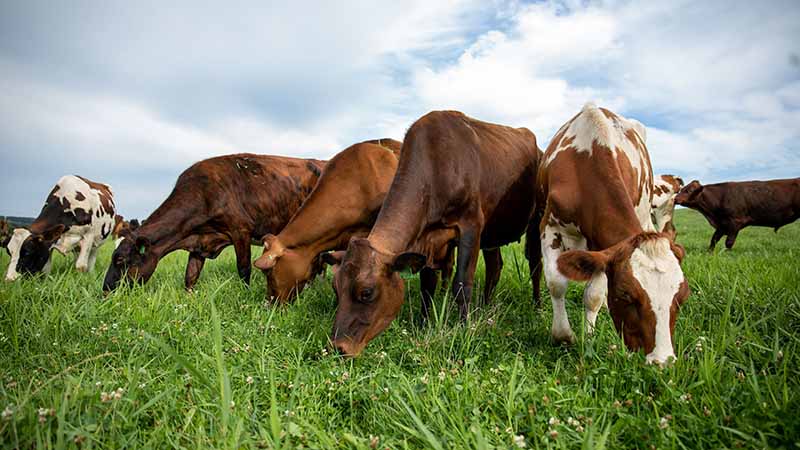
Increased precipitation could lead to more runoff, flooding events, and fields with elevated groundwater tables that cause more management challenges.
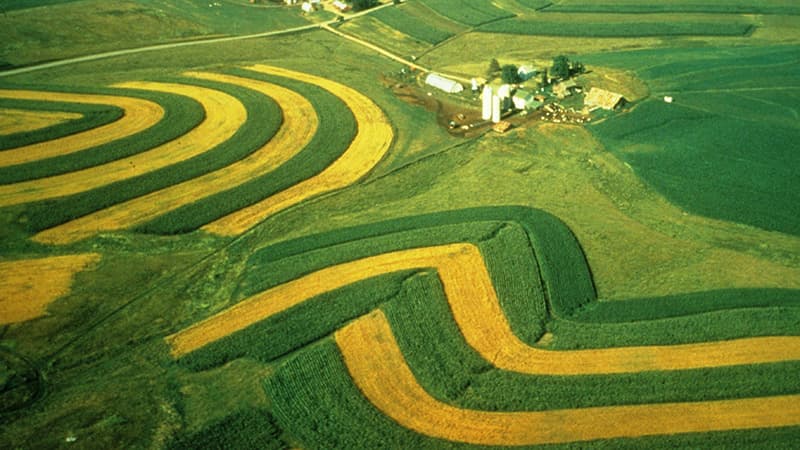
Increased frequency of extreme events — in particular heavy rainfall — will continue to cause increased challenges to managing soils and agrochemicals.
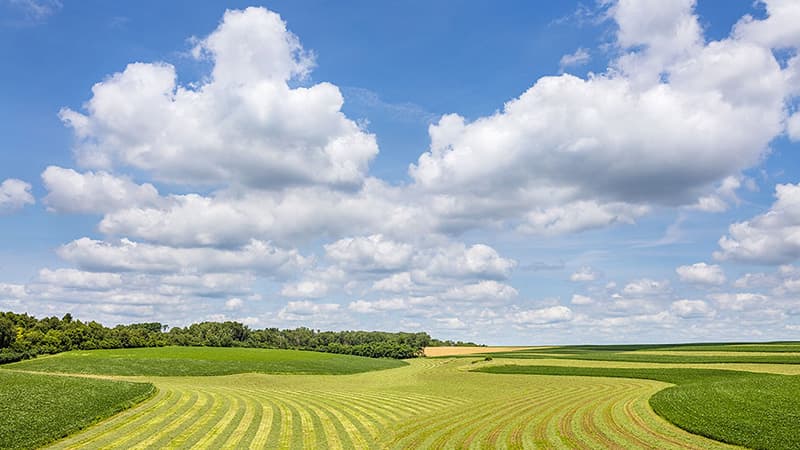
Climate change will also impact workers, people, and communities associated with agriculture. The anticipated response of Wisconsin agriculture to the changing climate, atmospheric composition, and land management has a wide range of uncertainty. The potential impacts are dependent on the region and the crops that are being grown.
Recommended Solutions/Strategies
Four key strategies can decrease agriculture’s greenhouse gas (GHG) emissions and promote soil carbon sequestration.
1
Increasing continuous living cover on agricultural land can reduce the need for fertilizer applications and associated nitrous oxide emissions and can increase soil carbon storage. In particular, rotationally managed pasture reduces the need for grain to feed livestock, which needs large amounts of nitrogen, and stores more soil carbon than overgrazed pasture or annual cropland.
2
Avoiding conversion of grasslands and other natural landscapes to row crop production, and avoiding conversion of agricultural land to development, will further prevent the loss of carbon stored in soils and trees.
3
Improving manure management to reduce liquid manure storage and better align nutrient application rates with plant nutrient need can reduce methane emissions from manure and nitrous oxide emissions from soils.
4
Increasing nitrogen use efficiency can reduce nitrous oxide emissions from soils and reduce carbon dioxide and methane emissions from fertilizer production.
In addition to increasing soil carbon sequestration and reducing greenhouse gas emissions, all these strategies have other benefits for agriculture and society, including reducing soil erosion and runoff of agrochemicals and manure to surface waterways, reducing nitrate leaching into groundwater, increasing biodiversity across the landscape, and providing improved financial stability for producers. These changes increase the resiliency of our landscapes to extreme weather events, while improving environmental conditions, human health, and agriculture’s overall contribution to a changing climate.
Environmental and Climate Justice Issues
Agriculture is deeply intertwined with the environment and the climate, making producers and laborers especially vulnerable to environmental and climate injustices. The Agriculture Working Group has identified these injustices as: the climate impacts on the health of farm workers, extreme weather eroding the independence and sustainability of agricultural communities, and the disproportionate burden of transitioning to a more sustainable agricultural model.
Health of Farm Workers
Farm laborers are likely to experience increased health and injury risk because of increased exposure to high heat and/or humidity and increased populations of disease vectors, like mosquitoes and ticks, caused by climate change. Migrant workers, who make up much of this workforce, will be disproportionately affected by these impacts. This will create additional pressures on the need for sound immigration and labor policy, likely having an impact on Wisconsin farmers. This will be further complicated as labor challenges and increased opportunities to automate continue.
Impact on Communities
Climate related pressures often stress production based on geographic region, such as the 2018 flooding in the Driftless Area of Wisconsin. Local communities bear the economic burden of the storm cleanup and production loss, which often causes outmigration that destabilizes communities.
Burden of Transition
We know that healthy soils benefit communities and producers by slowing runoff, regulating greenhouse gasses, infiltrating water, and retaining nutrients. However, the reality is that current conservation practices that build healthy soils are not always economically profitable for producers. There is also significant disparity among groups like migrant/immigrant populations, smaller producers, and producers with less access to education, capital, or other resources. These disparities leave them more vulnerable to environmental and climate injustices. Decision-makers need to ensure that any economic burden in transitioning to a more sustainable system is distributed equitably among agricultural processors, distributors, input suppliers, farm service providers, and others who profit from agricultural production.
Additional Information
This is an accordion element with a series of buttons that open and close related content panels.
Resources
- Fourth National Climate Assessment: Chapter 21 Midwest US
- Union of Concerned Scientists – Agriculture and Climate Change
- U.S. Environmental Protection Agency – Climate Impacts on Agriculture and Food Supply
- National Climate Assessment – Agriculture Impacts
- Intergovernmental Panel on Climate Change (IPCC) – Chapter 5 Agriculture
Videos
Websites
Our Team
Stakeholders and Partners
- Wisconsin Greenfire
- Clean Wisconsin
- Wisconsin Department of Agriculture, Trade, and Consumer Protection (DATCP)
- Monroe County Land Conservation Department
- Cooperative Network
Working Group Members
- Chris Kucharik (co-chair), UW-Madison Department of Agronomy and Nelson Institute for Environmental Studies, kucharik@wisc.edu
- Sara Walling (co-chair), Water and Agriculture Program Director, Clean Wisconsin, swalling@cleanwisconsin.org
- Chelsea Chandler, Clean Wisconsin
- Jed Colquhoun, UW-Madison Department of Horticulture
- Julie Dawson, UW-Madison Department of Horticulture
- Russ Groves, UW-Madison Department of Entomology
- Scott Laeser, Clean Wisconsin
- Diane Mayerfeld, UW-Madison Center for Integrated Agricultural Systems
- Bob Micheel, Monroe County Land Conservation Department
- Paul Mitchell, UW-Madison Department of Agricultural and Applied Economics
- Alli Parrish, UW-Madison Division of Extension
- Matt Ruark, UW-Madison Department of Soil Science
- Gregg Sanford, UW-Madison Department of Agronomy
- Kevin Shelley, UW-Madison Division of Extension
- John Shutske, UW-Madison Department of Biological Systems Engineering
- Dan Smith, Cooperative Network
- Damon Smith, UW-Madison Department of Plant Pathology
- Paul Stoy, UW-Madison Department of Biological Systems Engineering
- Jim VandenBrook, Wisconsin Greenfire
- Randy Zogbaum, UW-Madison Division of Extension

